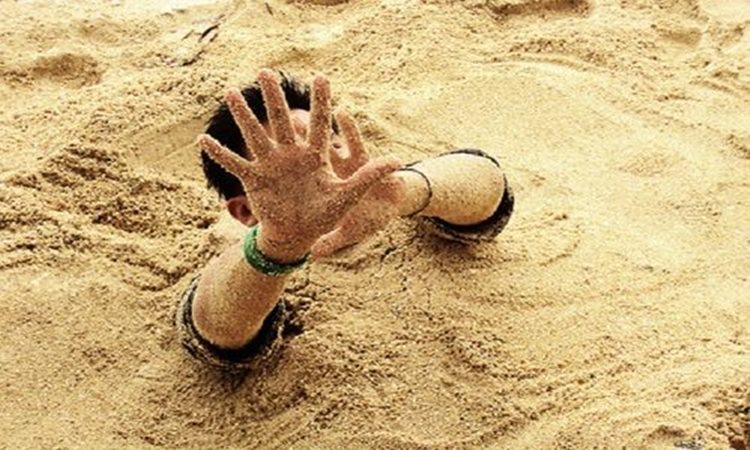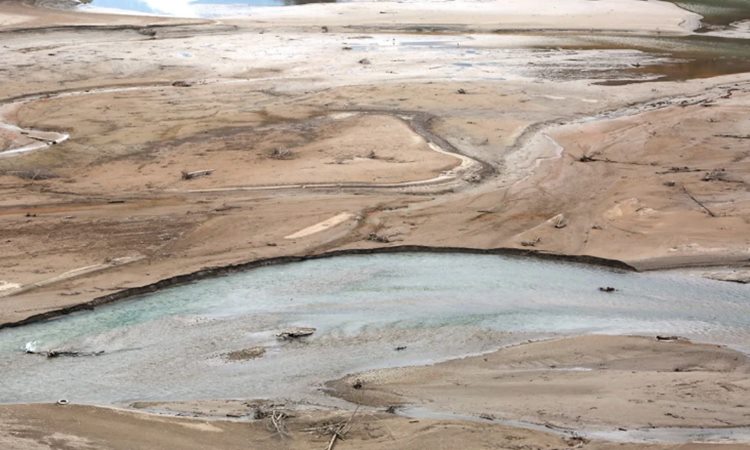Answers To Quick Questions About Quicksand
QUICKSAND – Explore these frequently asked questions about quicksand and take the time to let the answers sink in.
In Hollywood, few moments are as gripping as when a character gets trapped in quicksand. This stunt, often used for both high drama, as seen in Lawrence of Arabia, and comedic relief, as depicted in Gilligan’s Island, serves as a testament to the enduring allure of this dramatic moment.
However, quicksand is not merely a theatrical tool but a tangible threat that has entrapped people for centuries. Despite its prevalence worldwide, it remains a genuine hazard. Familiarize yourself with these frequently asked questions to gain a deeper understanding of this natural menace.

What Is Quicksand Made Of?
Quicksand appears deceptively similar to damp beach sand, leading many to unwittingly step into it. Unlike ordinary sand, quicksand is thoroughly saturated with water, often due to inadequate drainage caused by dense materials like clay. Additionally, salt and clay are commonly present, causing the clay particles to clump together and contribute to quicksand’s unstable nature. In certain cases, quicksand can form without the presence of salt, such as in Brazil, where bacterial activity turns the ground into quicksand when disturbed.
Quicksand can emerge in various locations where water and sand meet, including rivers, lakes, beaches, marshes, and natural springs. It can also form when water escapes from subterranean reservoirs, sometimes triggered by natural disasters.
Why Do People Sink In Quicksand?
The water-saturated nature of quicksand reduces the friction between sand particles, rendering it incapable of supporting any weight. Consequently, when pressure disrupts its structure, quicksand transforms into a viscous liquid, causing people and animals to sink into it. Once submerged, the quicksand solidifies, making escape increasingly challenging.
The risks associated with quicksand extend beyond individuals sinking into it. When quicksand surrounds structures like bridges or buildings, there is a potential risk of structural collapse.

How Dangerous Is Quicksand?
While it is true that stepping into quicksand will lead to sinking, the common portrayal of individuals being swallowed up and vanishing beneath the surface is an exaggeration. Due to its density, the human body is less prone to sinking entirely. Buoyancy can prevent individuals from sinking beyond waist-deep, although the difficulty of escape increases as the quicksand solidifies around them.
However, the dangers of quicksand should not be underestimated. Escaping from it is a time-consuming process, as demonstrated by a hiker in Utah’s Zion National Park in 2019, who remained trapped for hours and endured hypothermia and other injuries before being rescued. In some instances, individuals have drowned in quicksand when rising water levels prevent escape, albeit such fatalities are infrequent.
What Should You Do If You Step in Quicksand?
If you find yourself in quicksand, it is crucial not to panic, as struggling can worsen your situation. Avoid requesting assistance from bystanders to pull you out, as the force required to lift a foot out of quicksand is comparable to that needed to lift a midsize car, potentially leading to further injury. Instead, slowly and steadily shift your legs and feet to lessen the grip of the quicksand. Distributing your weight over a larger surface area can also help in your escape.
Remember, your body’s density is lower than that of quicksand, providing you with buoyancy. With patience and careful maneuvering, you can eventually free yourself from its grasp.
